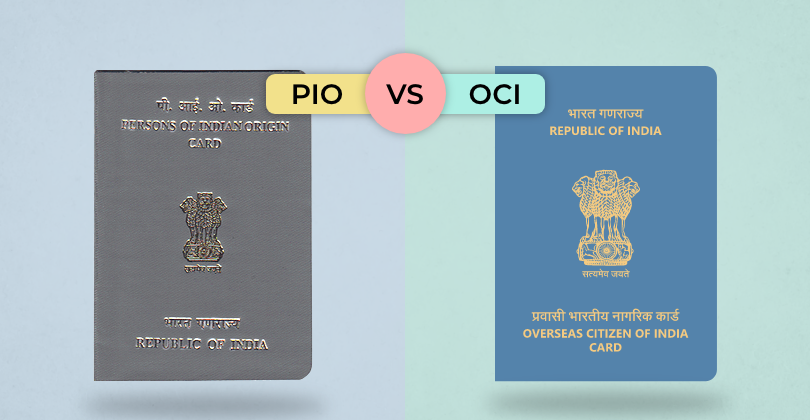Are you of Indian origin and living abroad? You've probably come across terms like PIO and OCI. These cards offer different benefits, but it can
In today's fast-paced financial landscape, loans have emerged as indispensable tools for achieving a wide range of goals – from acquiring assets like homes and vehicles to funding higher education and expanding businesses. However, securing a personal loan is merely the initial step in a fairly long financial journey.
The crux of this journey lies in understanding and effectively managing the personal loan repayment process. In India, a country with a diverse economic landscape, an assortment of loan repayment methods exists, each tailored to cater to the distinct needs and financial situations.
This article seeks to delve deep into the intricacies of various loan repayment methods in India while underscoring the paramount importance of responsible and timely repayment practices.
📗 Related reading- Understanding Loan Refinancing and Loan Restructuring in India
What is Loan Repayment?
Loan repayment is the core process of returning the borrowed capital amount alongside the accrued interest to the lending institution. Typically, this repayment occurs through fixed periodic instalments over a predetermined period. As borrowers embark on this financial journey, they are obligated to honour their commitment to repay the principal amount they borrowed as well as the interest that has accumulated over the loan tenure.
Importance of Loan Repayment
The significance of conscientious and punctual loan repayment cannot be overstated. This practice is not merely an obligation, but a pivotal stepping stone toward financial well-being. Here are several compelling reasons that highlight the importance of timely loan repayment:
-
Maintaining Creditworthiness
In India's dynamic financial ecosystem, a borrower's’ creditworthiness – often represented by their credit score – plays a pivotal role in shaping their financial trajectory. Timely repayment of loans enhances this credit score, positioning borrowers favourably for securing future loans at competitive interest rates.
-
Nurturing Financial Discipline
A disciplined financial approach is integral to long-term monetary success. By adhering to a consistent loan repayment schedule, borrowers cultivate financial discipline that extends to other areas of their finances and strengthens their decision-making abilities.
-
Mitigating Debt Burden
One of the most significant advantages of timely loan repayment is the reduction in the overall interest burden. As borrowers consistently make payments, a larger portion of each instalment goes toward repaying the principal, ultimately accelerating their journey toward freedom from debt.
-
Averting Penalties
Late or missed payments not only disrupt financial plans but also invite penalties and additional charges. These punitive measures exacerbate the financial burden on borrowers, making it imperative to stay committed to the repayment schedule.
-
Preserving Valued Assets
Some loans, such as mortgages and auto loans, are secured by valuable assets. Responsible loan repayment ensures that these assets remain secure and do not become subject to repossession due to default.
Additionally, safeguarding valuable assets is not only vital for individual borrowers, but also contributes to the stability of the overall financial system.
Take Control of Yyour Financial Future and Ensure Yyour Eligibility for a Personal Loan!Check Now!
What are the Types of Loan Repayment Methods in India?
India's multifaceted financial landscape offers an array of loan repayment methods, allowing borrowers to align their repayment strategy with their unique financial circumstances. Here are some prevalent loan repayment methods in India:
-
Equated Monthly Instalment (EMI)
EMI is the cornerstone of loan repayment in India. It entails fixed monthly payments encompassing both principal and interest components. EMIs offer borrowers a structured and manageable approach to fulfilling their repayment commitments.
This method provides a sense of stability and predictability, enabling borrowers to budget and plan their finances effectively.
-
Step-up Repayment
Tailored for individuals anticipating an upward trajectory in their income, step-up repayment begins with lower EMIs that gradually increase over time. This approach eases the initial financial burden and is well-suited for borrowers in the early stages of their careers.
The method accommodates career growth and mirrors the borrowers' increasing repayment capacity.
-
Step-Down Repayment
Contrary to step-up repayment, step-down repayment involves higher EMIs during the loan's initial years, gradually decreasing as time progresses. This method suits those who expect a reduction in income, such as individuals nearing retirement. It allows borrowers to front-load their repayments when their financial capacity is higher.
-
Balloon Repayment
Particularly relevant to business loans or projects with anticipated future windfalls, balloon repayment involves lower EMIs during most of the loan tenure, followed by a substantial lump-sum payment at the end. This method acknowledges the cyclic nature of certain businesses and enables borrowers to manage their cash flows more effectively.
-
Bullet Repayment
In this method, only interest payments are made throughout the loan tenure, with the principal repaid as a single bullet payment at the loan's conclusion. Bullet repayment is often utilised for shorter-term loans or for those with specific bullet repayment clauses. It provides flexibility for borrowers with uneven income streams.
-
Flexible Loan Repayment
Some lenders offer the flexibility to adjust EMI amounts based on the borrower's financial circumstances. This feature proves invaluable during unexpected financial emergencies or windfall gains. This method provides a safety net for borrowers facing temporary financial setbacks.
-
Overdraft Facility
Certain loans, like home loans with overdraft facilities, permit borrowers to park surplus funds within the loan account. This effectively reduces the outstanding principal and leads to interest savings. This method blurs the lines between borrowing and saving, offering borrowers the opportunity to optimise their funds.
-
Prepayment and Foreclosure
Borrowers can choose to prepay their loans or opt for foreclosure, paying off the loan ahead of the original tenure. Such measures substantially alleviate the overall interest burden. Prepayment offers borrowers a chance to expedite their journey to debt freedom and save on interest costs.
Explore Smart Loan Repayment Options on KreditBee.Get Started!
Factors to Consider When Choosing a Repayment Method
When selecting a loan repayment method, borrowers should consider several factors:
-
Financial Stability
Choose a method that aligns with your financial stability and future income projections.
-
Loan Tenure
Different methods offer varying loan tenures. Select a tenure that matches your repayment capacity and financial goals.
-
Income Variability
If your income varies, opt for a repayment method that allows flexibility in EMI amounts.
-
Interest Rate Type
The type of interest rate (fixed or floating) impacts the EMI calculation and the overall repayment amount.
-
Future Plans
Consider your life stage and future plans. For instance, if you plan to start a family, a step-down repayment might be suitable.
-
Risk Tolerance
Evaluate your risk tolerance. Some methods, like balloon repayment, involve higher risk but potential rewards.
Conclusion
Loan repayment is a vital aspect of responsible financial management. It is not just a legal obligation, but also a pathway to financial freedom. Choosing the right repayment method requires careful consideration of various factors, such as income stability, financial goals, and risk tolerance.
Whether it is the widely -used EMI method, flexible repayment options, or specialised methods like balloon repayment, borrowers in India have an array of choices to align their loan repayment strategy with their individual circumstances.
Ultimately, the key to successful personal loan repayment lies in consistent financial discipline and a commitment to fulfilling one's obligations, ensuring a secure financial future.
AUTHOR
KreditBee As a market leader in the Fintech industry, we strive to bring you the best information to help you manage finances better. These blogs aim to make complicated monetary matters a whole lot simpler.







